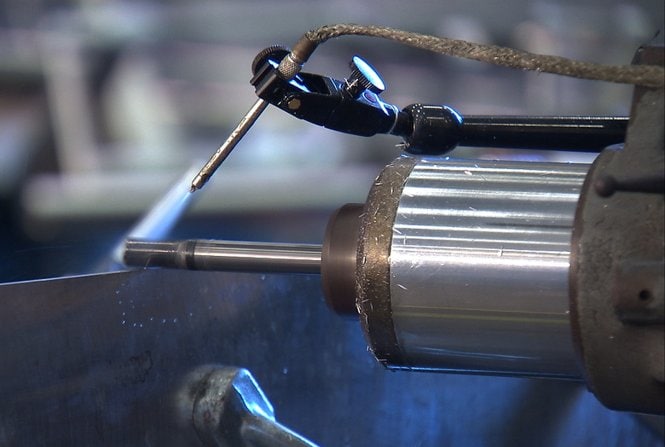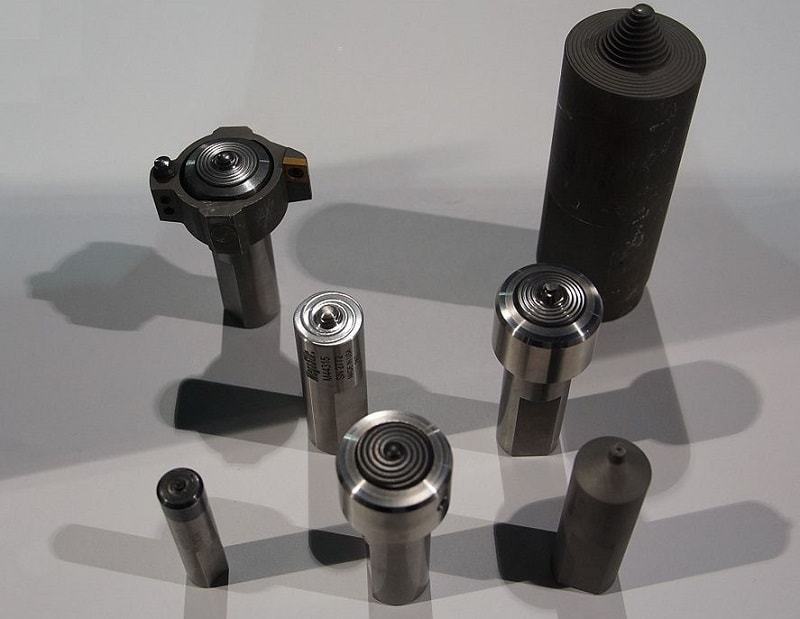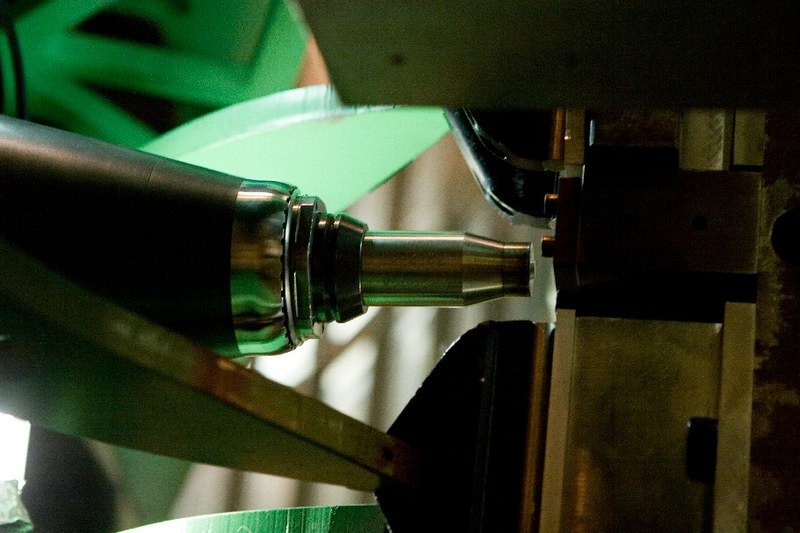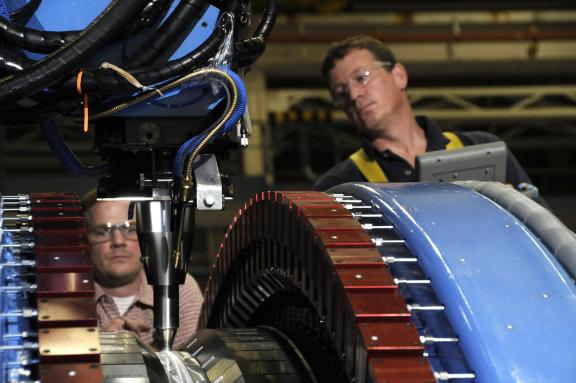What is Friction Stir Welding (FSW)? How Does it Work? (2024)
Last Updated on

Over the past 10 years, FSW is deemed to be among the more consequential innovations in welding. It’s a solid-state connecting procedure that’s versatile, eco-friendly, and effective when it comes to energy consumption.
So, what is friction stir welding?
It’s also called FSW. It’s a contact welding procedure that uses the heat produced through friction to melt two distinct materials together. This connection approach doesn’t use any consumables in the process.
We’ve compiled everything about friction stir welding comprising how it works, applications, benefits, and drawbacks. Read on!
Friction Stir Welding: How Does it Work?
The notion is simple: in friction stir welding, the welding machine rotates to form friction. Then, the heat produced by friction is used to weld.
Friction stir welding requires a specially developed device. The device spins at high velocity over the seams you’re welding together. As the device is spinning at a high velocity above the metal, heat is produced.
You can use friction stir welding to weld two types of joints in welding:
- Butt joints
- Lap joints
In this welding procedure, the welding tool used comprises two parts. It has a cylindrical part known as the shoulder, which acts on the weld seam. Also, there’s a pin that lengthens out of the shoulder.
First, the pin is introduced into the seam to hold the shoulder into position. Then, the shoulder spins on top of the workpiece. It gives it sufficient time to produce the best temperature and allows it to be swallowed up in the material.

As soon as this is achieved, the device moves across the weld seam, forming an incessant weld. It’s made possible because of the heat generated by the device and the metallic particles blended by the profiled pin.
Here, the softened particles are being “stirred” by the pin to melt them together. It’s where the procedure derives the name “friction stir welding.”
Three regain types are created in the material because the contact temperature rises. The three types of regains are thermo-chemically-affected area, weld nugget, and heat-affected area. A weld nugget is a pool of melted metal that has cooled and solidified into a round joint.
The thermo-mechanically affected area is an exclusionary area created in friction welded joints. It’s a transition zone located between the stir zone and the heat-affected area.
The area of the parent metal that hasn’t melted is known as the heat-affected area. However, the characteristics and microstructure are influenced by the heat-intensive cutting operations.
What Are the Differences Between Friction Welding and Friction Stir Welding?
There are a couple of welding approaches that utilize friction to produce heat. Friction welding is the most common among these welding processes.
In this technique, heat is usually produced by moving a single workpiece with the other at the seams. This friction makes the surfaces melt and fuse.
Nonetheless, this restricts friction welding during assembly as you should use a straight reciprocating motion to move the workpiece at high velocity. It implies that you can only put the parts in a particular way.
Friction stir welding overcomes this restriction as the workpieces are fixed into position. The device is also moved along the seam to produce a weld.
Friction Stir Welding: Where is it Used?
Friction stir welding is applied in a wide array of industries that utilize aluminum. Some of the areas where this welding process is used include:

Shipbuilding
Initially, friction stir welding was used to weld hollow aluminum plates for making fishing boats. These days, this welding approach is common when it comes to welding aluminum freezer plates used in the hull and body of ships.
Aluminum panels don’t distort their shape even with long weld seams. It’s because friction stir welding has minimal deformation.
Aerospace
Aluminum fuel tanks are welded using friction stir welding. They’re used to keep cryogenic oxygen in a spacecraft. The cylinder-like structure that makes up these aluminum fuel tanks is welded to the domes using this connecting approach.
Also, friction stir welding is used to connect light aluminum frames that are visible in the fuselage of an airplane. It’s because this welding approach provides a much lighter option for riveting or bolting.
Trains
When it comes to welding T-stiffener extrusions and hollow profiles for fabricating high-velocity trains, friction stir welding is the best bet.
Automobile Industry
The motor vehicle industry has switched to aluminum as the best material for readying a car chassis. Therefore, friction stir welding technology is crucial in the automotive industry.
Traditional welding processes cannot create high-tolerance parts as compared to friction stir welding. The fast welding times connected to this welding type make the procedure more attractive as compared to other welding forms.

What Welding Forces Act on the Tool in FSW?
A couple of forces will act on the device when welding.
- To maintain the tool’s position beneath the material’s surface, a downwards force is a requisite. Friction stir welding appliances work under load control. Nonetheless, in numerous instances, the device’s position is set in advance. It means that the load differs when welding.
- It has a traverse force that operates parallel to the movement of the device. The motion is positive in the traverse direction. Because this force occurs due to the material’s resistance to the tool’s movement. You may anticipate that this force may drop if the material’s temperature around the device increases.
- The sideways force acts orthogonally to the device’s traverse direction. Therefore, here it’s defined as positive towards the weld’s advancing side.
- To spin the device, you require torque. The amount of torque is based on the downforce and sliding friction (friction coefficient) or the strength of the material in the surrounding area (static friction).
The welding cycle is altered to ensure that the forces acting on the device are less. It shuns sudden changes, stops the tool from breaking, and lessens excess wear and tear on the device and the related machinery.
If you want to get the best combination of welding parameters, there’s a likelihood that you have to reach a compromise. It’s because the conditions that prefer low forces such as low travel velocities and higher output of heat, can be objectionable from the point of view of the weld characteristics and productivity.
How is Friction Stir Welding Carried Out?
It’s carried out with the help of:
- A clamp used to grasp the workpieces together
- A profiled welding device
- A mechanical apparatus to steer the device along the connection line
To form a weld joint, these components work in association with each other. In terms of the shape, the device is similar to a milling cutter, that spins during the entire procedure.

You can move it along the surface of the workpiece. Initially, the device is shoved into the connection line surface. Then, it’s traversed alongside the connection line boundary by the welding appliance.
The friction between the workpiece and the non-wear device generates heat and increases the metals’ temperature close to the connection line. At the very end terminal of the device, there’s a profiled probe.
It’s molded in a way that it pushes metals on the two sides of the connection line into each other. The metals conflate easily because of the heat produced in the procedure at this particular point. It’s also because they have been softened significantly.
This welding process offers a couple of benefits over traditional arc welding procedures. They comprise:
- It’s a solid-state welding procedure that doesn’t have porosity, sultry cracking, or solidification cracks. It implies that the process is fault-free.
- The material being connected doesn’t shrink or contort because of the lower temperatures.
- For aluminum alloys, you don’t require flux, protective gas, or any filler materials.
- This welding procedure doesn’t generate spatter, fumes, or Ultra-Violet radiation and, therefore, it’s eco-friendly.
- The process is highly repeatable. It doesn’t need experienced welders and it’s easy to automate it. It’s because it uses machine tool technology.
- With this welding technique, you can work in any position.
- It has great mechanical characteristics. For aluminum alloys, the mechanical properties are usually equal to those that can be procured by competing procedures.
- Friction stir welding is energy efficient.
- In most applications, there’s no special edge preparation needed.
Although type of welding offers numerous benefits, there are a couple of drawbacks allied with the procedure. They include:
- After removing tools from the materials to be welded, an exit hole is left. Nonetheless, it can be justified for in the part’s design or through using run on/off tabs.
- Clamping on the parts you’re connecting is crucial as compared to arc welds. It’s because you need a considerable downforce and traversing forces.
- In this welding procedure, no filler material is used and, therefore, there are gaps left between the parts and which need to be regulated.
Besides its drawbacks, friction stir welding is an intelligent notion as it offers versatility, performance, and sustainability. With friction stir welding, it’s now possible to connect metals of distinct alloys and compositions, and at the same time, maintain great tensile strength. It’s a dependable welding procedure for numerous industries.

FAQs
What materials can you use in friction stir welding?
At first, this type of welding was restricted to softer workpiece materials such as zinc, aluminum alloys, lead. Nonetheless, lately, other metals like titanium, nickel, copper, steel alloys, and low carbon steel are materials that you can also use with friction stir welding.
When it comes to friction stir welding, what is the advancing side?
It’s where the solid material begins changing into a semi-solid one and starts to flow around the pin introduced into the material.
What’s the principal Divergence between friction stir and friction welding?
In friction welding, heat is produced by the straight motion of two workpieces against each other. When it comes to FSW, a tool is used to produce heat along the weld seam of two workpieces. After softening, it stirs the particles together to weld them.
What is friction stir processing?
It’s a way of altering the characteristics of metal via strained, localized plastic transformation. To generate this warping, introduce a non-consumable tool into the material. Then, push the tool through the material as you rotate it in stirring movement. This processing type ensures that your product is strong and forms well.
In terms of cost, how is friction stir welding as compared to other welding processes?
To most welders, friction stir welding using aluminum alloys is a pocket-friendly procedure. It’s partly because of the eradication of consumable costs. Also, it’s because, even in thick metal, it can generate most welds in one or two passes.
Friction stir welding is also an effective procedure when it comes to energy consumption as it can lead to considerable cost savings. Also, if you completely automate the procedure, then you’ll lessen the cost of labor and the likelihood of faults.

What are the Principles of Friction Stir Welding?
- The device used in this welding type comprises a pin that stirs the parts together and a shoulder used to heat the material through friction.
- The parts have been fastened through overlapping (lap welding) or edge to edge (butt welding).
- The device spins at a speed of between 400 and 1800 rpm. It then dips vertically into the material.
- After passing through the temperature stabilization stage which lasts between 1 to 5 seconds, the device moves along the weld seam at a steady velocity of between 200 and 3000 mm per minute. It’s based on the thickness and nature of the parts.
- A regulated force of 3-18 kN is applied to the friction stir welding tool during movement. The heat produced by friction softens the material. The welding process is performed in a solid-state without melting the material.
- The tool leaves a hole as it rises vertically at the end of the weld. Usually, the hole is perceived as a fault. Nonetheless, numerous solutions exist to resolve this disadvantage.
Conclusion
Friction stir welding (FSW) is among the most unparalleled type of welding approaches available these days. It creates potent weld seams and doesn’t compromise on weight and esthetics.
Friction stir welding stands out from the crowd as an unequaled candidate. We hope that this guide has been helpful to you. Now, you understand everything you need to know about friction stir welding.
Featured Image: NASA’s Marshall Space Flight Center, Flickr licensed under CC BY-NC-ND 2.0
